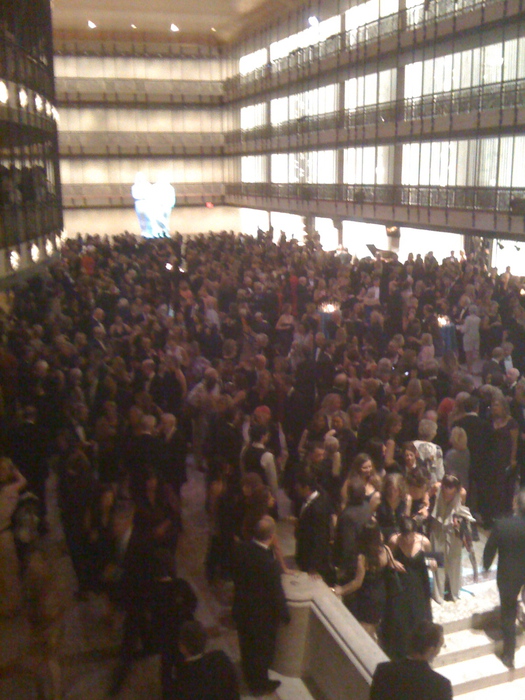
December 31, 2009
Johnson and the Void

For a new “Reputations” column on the lives of prominent architects and theorists, the editors at Architectural Review asked me to put together a piece about Philip Johnson. I was somewhat reluctant, given that I am still very much in the midst of my biographical research, but decided it would be a useful exercise, and let me float one of my pet theories about how Johnson’s architecture and personality tie together:
If there is any single characteristic that defines the architectural vocabulary of Johnson’s work, it is the void. Vacant spaces appear with regularity at the hearts of his buildings, regardless of programme: private residence, office tower, public institution. The Glass House, the building that will always define him, is in essence an empty container, a simple open room, a null space.
Johnson spoke with great eloquence about the primacy of procession in architecture, of the critical importance of experiencing a building through time and space. His own work, however, is generally defined by courts and atriums and open rooms − points of stasis. He imagined these as spaces of social interaction, and at their best, when animated by a human presence, they can achieve a great energy. Emptied of that presence, they can be just the opposite − barren, inert, inhuman.
Those voids are reflective of nothing so much as Johnson himself; he was, like his architecture, a vessel always in search of an external charge. It is this essential nature that explains his history of shifting positions, his changing favourites, his obsession with the new.
The picture above, of his Bobst Library for NYU, represents this tendency at its worst. It was shot by Jessica Mintz, to document her 2003 story in The Villager about the installation of safety barriers in the library following a pair of suicides. Below is the great promenade at the New York State Theater at Lincoln Center, during the gala for the New York City Ballet. A world of difference.

Observed
View all
Observed
By Mark Lamster
Related Posts

Business
Courtney L. McCluney, PhD|Essays
Rest as reparations: reimagining how we invest in Black women entrepreneurs

Design Impact
Seher Anand|Essays
Food branding without borders: chai, culture, and the politics of packaging

Graphic Design
Sarah Gephart|Essays
A new alphabet for a shared lived experience

Arts + Culture
Nila Rezaei|Essays
“Dear mother, I made us a seat”: a Mother’s Day tribute to the women of Iran
Recent Posts
Candace Parker & Michael C. Bush on Purpose, Leadership and Meeting the MomentCourtney L. McCluney, PhD|Essays
Rest as reparations: reimagining how we invest in Black women entrepreneurs Food branding without borders: chai, culture, and the politics of packaging Why scaling back on equity is more than risky — it’s economically irresponsibleRelated Posts

Business
Courtney L. McCluney, PhD|Essays
Rest as reparations: reimagining how we invest in Black women entrepreneurs

Design Impact
Seher Anand|Essays
Food branding without borders: chai, culture, and the politics of packaging

Graphic Design
Sarah Gephart|Essays
A new alphabet for a shared lived experience

Arts + Culture
Nila Rezaei|Essays
